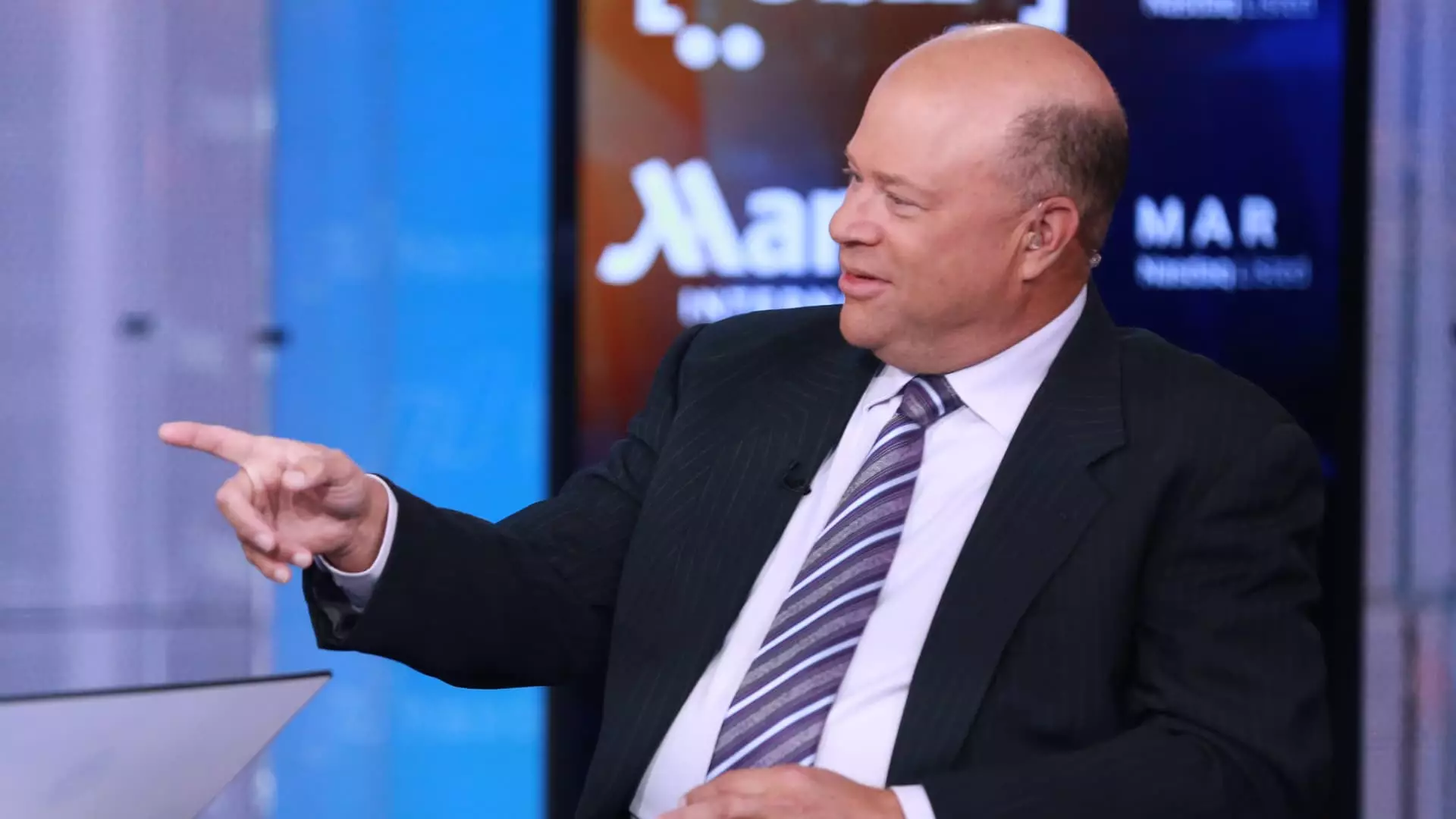In the fragile landscape of modern finance, Central Banks often find themselves walking a tightrope — attempting to stimulate growth without igniting runaway inflation. The recent remarks by hedge fund magnate David Tepper reveal a sobering perspective that should resonate with any serious investor or policy analyst. Tepper warns that additional rate cuts by the Federal Reserve may seem enticing in the short term but are fraught with significant long-term risks. This insight challenges the widespread belief among policymakers and market participants that easy money policies are necessarily benign or even beneficial. Instead, Tepper underscores how artificially low interest rates can artificially inflate asset prices, creating bubbles that threaten to burst once the music stops.
The idea that monetary easing is inherently safe is fundamentally misguided. Central banks underestimate the damage that excessive stimulus can cause, especially when the economy already exhibits signs of overheating. When policymakers flood the markets with liquidity, they effectively distort the natural price signals that guide investment and consumption. Investors, seduced by soaring valuations of tech giants like Nvidia and Microsoft — with their sky-high multiples — may deceive themselves into believing that such levels are sustainable. But it’s an illusion driven by monetary subsidies rather than organic growth fundamentals. Tepper’s skepticism about high valuations reminds us that markets can remain illusory longer than most anticipate, but paying the price for this misconception is inevitable.
Overestimating the Power of Rate Cuts
Tepper advocates a cautious stance, suggesting that even a couple of rate reductions exert diminishing returns against mounting hazards. His argument is rooted in the premise that the economy is already in a lukewarm or restrictive zone, where lower rates risk reigniting inflation rather than stimulating growth. The danger lies in a scenario where demand outpaces supply — a textbook recipe for inflation acceleration. This is particularly troublesome given that inflation might not be fully tamed yet, despite the Fed’s efforts, and could, in fact, be reinforced if the Fed becomes too accommodating. Such a predicament would undermine the very stability the central bank seeks to preserve.
Furthermore, Tepper highlights how aggressive easing could weaken the dollar, making imports more expensive and further fueling inflation. It’s a stark reminder that monetary policy is not a one-size-fits-all solution and carries asymmetric risks. A misguided attempt to prop up markets artificially might deliver short-term gains but sow the seeds for a more tumultuous future. Central bankers and policymakers must recognize the limits of their tools and resist the allure of “easy fix” solutions that, upon reflection, could be their undoing.
The Illusory Confidence of Investors and the Perils of Valuation Bubbles
Despite recognizing the high valuations in the stock market, Tepper admits that his own positions are difficult to navigate. With the S&P 500 near peaks unseen since April 2021, and tech stocks like Nvidia and Microsoft trading at levels that defy traditional valuation metrics, investor confidence remains unshaken — at least publicly. This complacency is dangerous. It fosters a false sense of security that the market’s exuberance is justified by fundamentals, when in reality, the foundation is reinforced by borrowed money, low interest rates, and a mindset that assumes central banks will always patch the economy’s wounds.
Tepper notes that he’s trading in and out of positions such as Nvidia, highlighting the difficulty of opposing market momentum driven by Fed policy. But this strategy assumes that the easy money will continue indefinitely, an assumption that neglects the cruel reality that bubbles always pop — and with devastating consequences for those caught unprepared. The dangerous comfort derived from suppressed interest rates and lofty valuations could lead investors into complacency, making the eventual correction all the more severe.
The Underlying Reality: Market Optimism or Monetary Illusion?
What Tepper’s cautious stance ultimately exposes is a basic truth: markets are increasingly driven by sentiment and liquidity rather than solid economic fundamentals. The broader risk is that policymakers and investors alike have fallen into a trap of overconfidence, underestimating the potential fallout from sustained easing policies. When the market is inflated by central bank intervention, the foundation for sustainable growth is fundamentally shaky. Should the Fed tighten or prove unable to sustain these artificial supports, crackdowns on valuations and rises in inflation could hit faster and harder than anyone expects.
This scenario underscores the importance of skepticism and discipline in investment strategies. Relying on continued easy money to buoy asset prices is a perilous gamble that could backfire with catastrophic consequences. Investors should heed Tepper’s warning: be cautious of the illusions created by monetary policy, recognize the signs of overheating, and avoid the complacency that can spiral into devastating losses once the bubble bursts.

